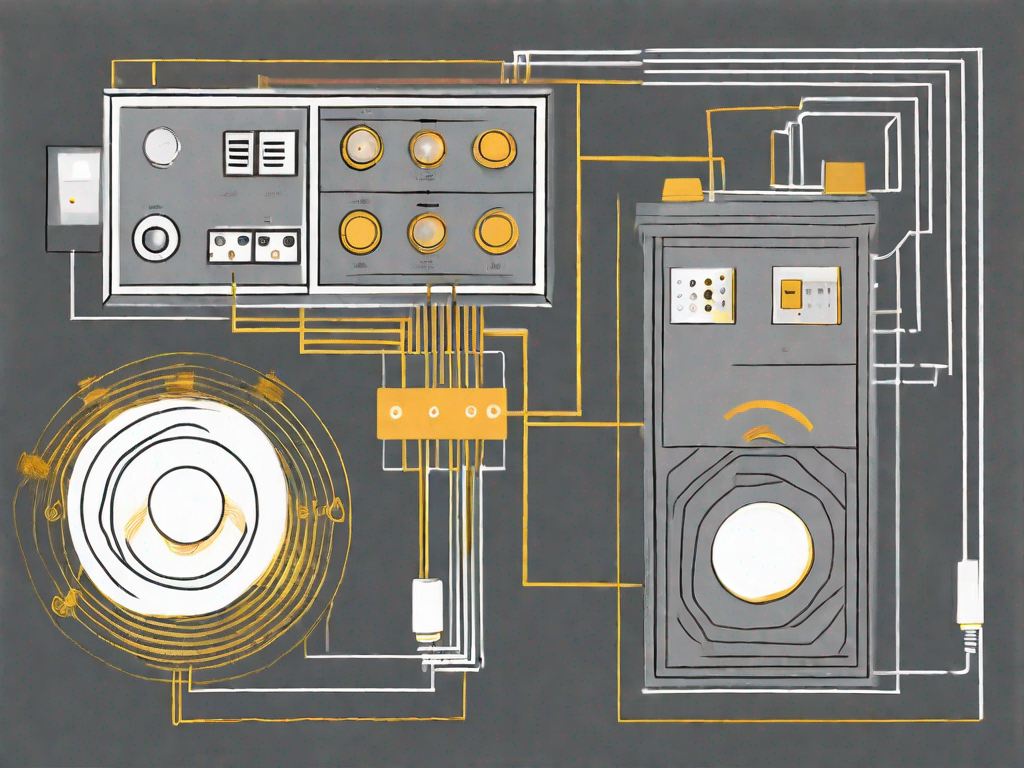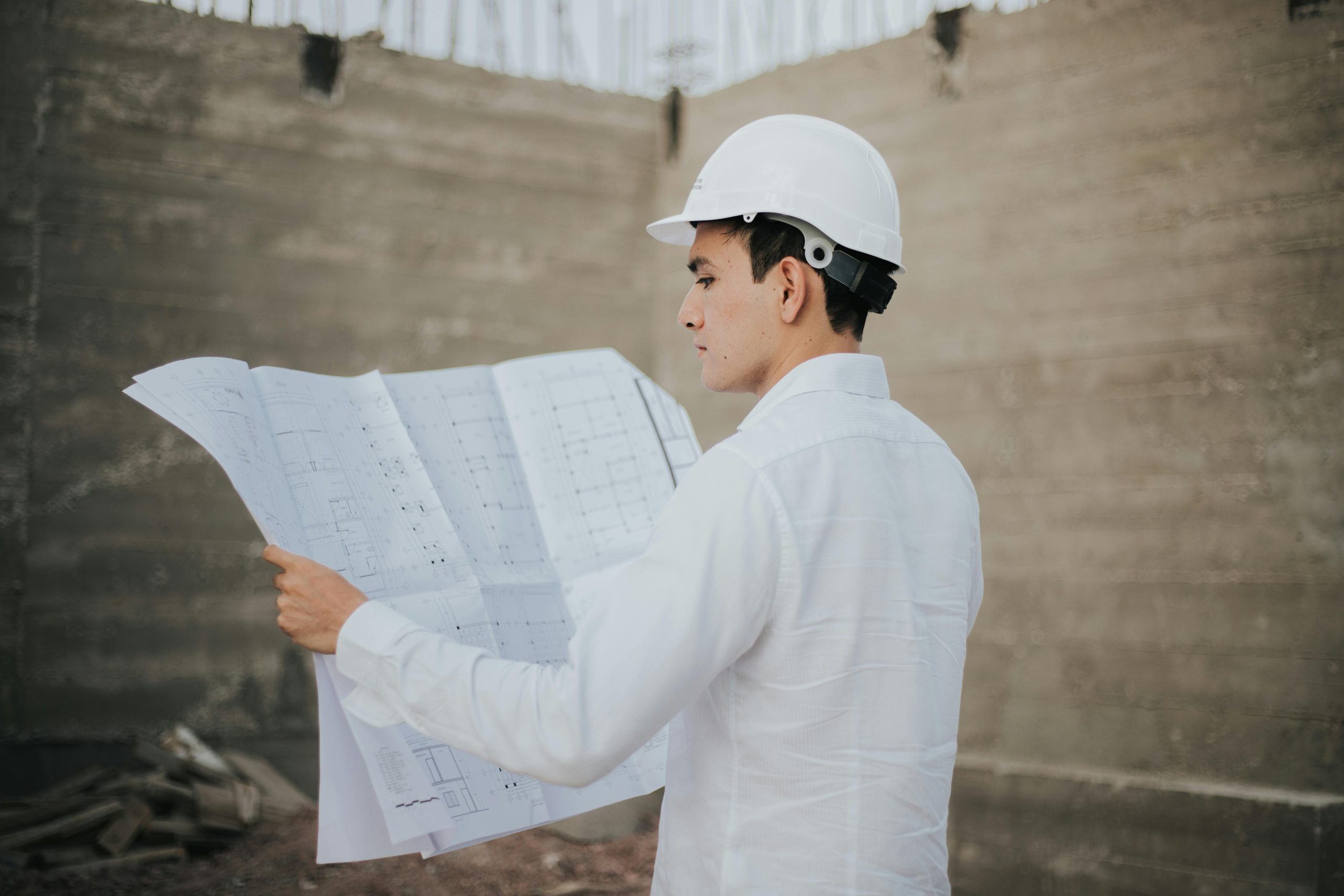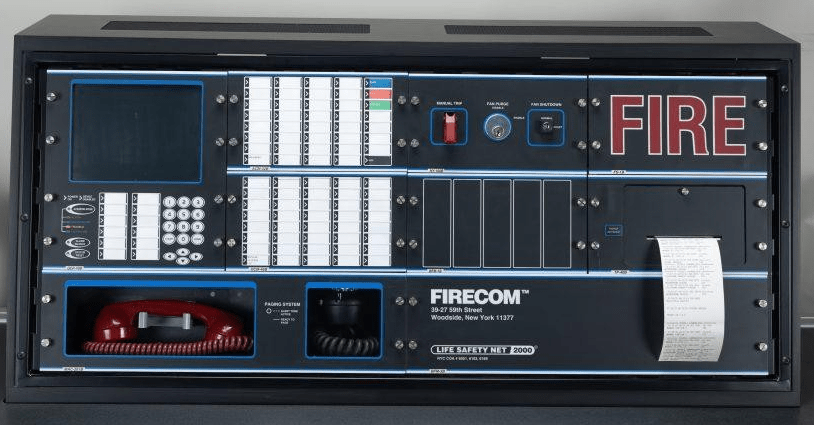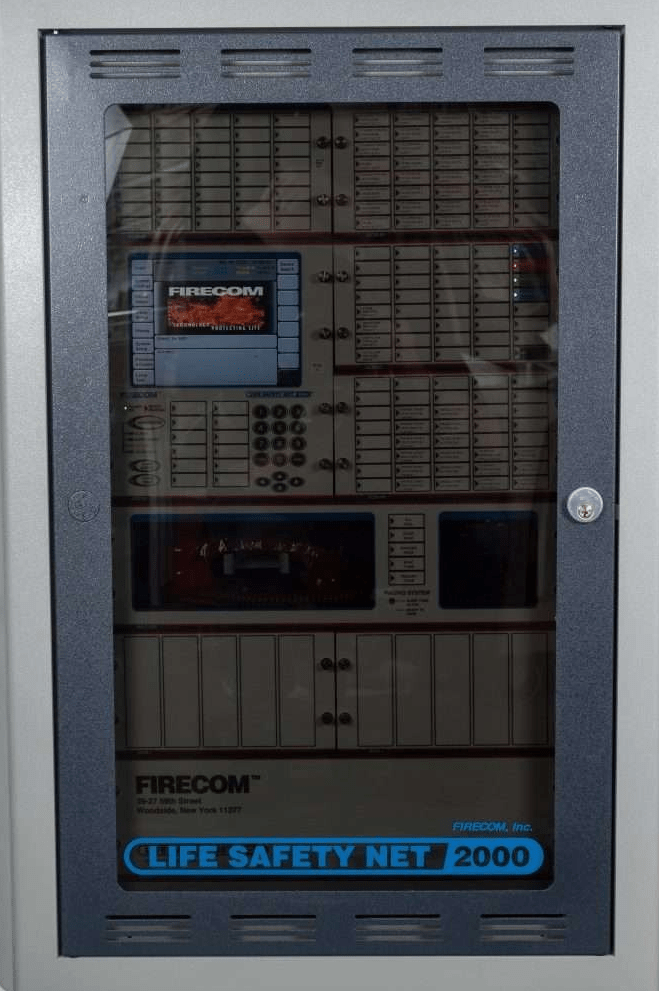
Differences between EST3 and EST4 systems
In the world of fire alarm and life safety systems, EST3 and EST4 are two highly recognized names. Both systems offer advanced features and exceptional performance, but they also have some distinct differences. Whether you are an industry professional seeking to expand your knowledge or a facility manager considering the implementation of a new system, understanding these differences is crucial. In this article, we will take a closer look at the key features, technical specifications, common applications, and future developments of both EST3 and EST4 systems.
Understanding EST3 Systems
When it comes to fire alarm and life safety systems, EST3 is a name that stands out. These systems are renowned for their versatility and reliability, making them a top choice for many facility managers and building owners. Let’s take a closer look at the key features, technical specifications, and common applications of EST3 systems.
Key Features of EST3 Systems
EST3 systems are not just your ordinary fire alarm systems. They offer a wide range of features that set them apart from the competition. One of the standout features of EST3 is its enhanced capability to integrate seamlessly with other building management systems. Whether it’s HVAC, access control, or CCTV, EST3 can effortlessly communicate and coordinate with these systems, providing a comprehensive and streamlined approach to facility management.
Furthermore, EST3 offers advanced emergency voice communications, allowing for clear and effective communication during critical situations. This feature ensures that occupants of a building can receive important instructions and guidance in case of an emergency, enhancing overall safety and evacuation procedures.
Technical Specifications of EST3
EST3 systems are designed to deliver exceptional performance while maintaining ease of use. These systems utilize state-of-the-art technology to ensure fast and accurate detection of fire and other hazardous conditions. With advanced signaling line circuits (SLCs), EST3 can cover large areas efficiently and provide accurate pinpointing of fire events.
Additionally, EST3 systems are compatible with various detection devices, including smoke detectors, heat detectors, and manual pull stations. This compatibility ensures comprehensive coverage for any application, whether it’s a small office building or a large industrial complex. The flexibility of EST3 systems allows for customization based on specific needs and requirements.
Common Applications of EST3
EST3 systems find extensive use in a wide range of applications. Their versatility and compatibility with other building systems make them a popular choice for complex projects that require extensive coordination among different systems. Let’s explore some common applications of EST3:
- Office Buildings: EST3 systems are often installed in office buildings to ensure the safety of employees and visitors. The integration capabilities of EST3 allow for efficient management of various building systems, enhancing overall security and convenience.
- Healthcare Facilities: In hospitals and healthcare facilities, where the safety and well-being of patients are of utmost importance, EST3 systems play a crucial role. The advanced detection capabilities and emergency voice communications ensure timely response and evacuation in case of emergencies.
- Manufacturing Plants: With their ability to cover large areas and integrate with other systems, EST3 systems are well-suited for manufacturing plants. These systems provide reliable fire detection and emergency communication, minimizing the risk of fire-related incidents and ensuring the safety of workers.
- Educational Institutions: Schools and universities also benefit from the installation of EST3 systems. The comprehensive coverage and advanced features of these systems contribute to a safe and secure learning environment for students and staff.
These are just a few examples of the many applications where EST3 systems excel. Whether it’s a small commercial building or a large industrial complex, EST3 offers the reliability, versatility, and advanced features required for effective fire alarm and life safety solutions.
Unpacking EST4 Systems
Welcome to the world of EST4 systems, where the latest advancements in fire alarm technology come together to provide exceptional performance and scalability. These systems are designed to handle large and complex installations with ease, making them a preferred choice for architects and engineers.
EST4 systems have the remarkable ability to accommodate the demands of any project, whether it’s a sprawling multi-building campus or a towering high-rise structure. No matter the size or complexity, EST4 systems rise to the occasion, ensuring the safety and security of the premises.
Primary Characteristics of EST4 Systems
Let’s dive deeper into the primary characteristics that make EST4 systems stand out from the crowd. One of the key features is their unparalleled scalability. These systems can effortlessly adapt to the evolving needs of a facility, allowing for future expansion without compromising on performance.
EST4 systems are equipped with cutting-edge technology that ensures reliable and efficient operation. With high-speed Ethernet connectivity, these systems enable faster data transmission and improved system response time. This means that in the event of an emergency, every second counts, and EST4 systems are designed to provide swift and accurate responses.
But that’s not all. EST4 systems also boast integrated self-testing capabilities, which means they can continuously monitor their components and identify any potential issues. This proactive approach ensures maximum system uptime and minimizes the risk of unexpected failures.
Furthermore, EST4 systems support advanced visualization tools that provide intuitive graphical representations of the system’s status and events. This enhanced situational awareness empowers facility operators to make informed decisions quickly, ultimately improving the overall safety and security of the premises.
Technical Details of EST4
Now, let’s delve into the technical details that make EST4 systems the epitome of excellence. These systems are built upon a foundation of cutting-edge technology, incorporating the latest innovations to deliver unparalleled performance.
EST4 systems leverage high-speed Ethernet connectivity, enabling seamless communication between various system components. This not only facilitates faster data transmission but also enhances the overall system response time, ensuring swift and efficient operation.
One of the standout features of EST4 systems is their integrated self-testing capabilities. These systems continuously monitor their components, conducting routine checks to identify any potential issues. By proactively detecting and addressing problems, EST4 systems ensure maximum system uptime and minimize the risk of unexpected failures.
EST4 systems also support advanced visualization tools that provide facility operators with intuitive graphical representations of the system’s status and events. This visual feedback enhances situational awareness, allowing operators to quickly assess the situation and take appropriate actions.
With EST4 systems, facility operators can rest assured knowing that they have a reliable and efficient fire alarm system at their disposal, ready to protect lives and property at a moment’s notice.
Typical Uses of EST4 Systems
EST4 systems are incredibly versatile, making them well-suited for a wide range of applications. From commercial complexes to critical infrastructures, these systems excel in various environments, ensuring the utmost safety and security.
Due to their scalability and advanced networking capabilities, EST4 systems are often the preferred choice for large-scale installations. Whether it’s an expansive airport, a bustling stadium, a data center housing vital information, or a government facility, EST4 systems rise to the occasion, providing the necessary flexibility and future expansion options.
EST4 systems are designed to meet the unique challenges posed by these diverse environments. Their advanced technology, combined with their ability to handle complex installations, makes them the go-to choice for architects, engineers, and facility operators who prioritize safety and reliability.
In conclusion, EST4 systems represent the pinnacle of fire alarm technology, offering exceptional performance, scalability, and advanced features. With their cutting-edge technology, integrated self-testing capabilities, and advanced visualization tools, EST4 systems ensure reliable and efficient operation in a variety of applications. Whether it’s a small commercial complex or a sprawling government facility, EST4 systems are the trusted choice for those who prioritize safety and security.
Direct Comparison of EST3 and EST4
When considering the differences between EST3 and EST4 systems, it’s essential to conduct a comprehensive feature-by-feature comparison. Both systems offer advanced detection capabilities and reliable performance, but there are distinct variations that might influence your decision-making process. For instance, while EST3 excels in system integration, EST4’s scalability and advanced networking capabilities make it a preferred choice for larger installations. Therefore, understanding your specific requirements is crucial in selecting the most suitable system for your application.
EST3 and EST4 are both highly regarded fire alarm systems that have been widely used in various applications. They have proven track records of providing reliable and efficient fire detection and notification. However, when it comes to choosing between the two, it’s important to delve deeper into their performance differences and cost implications.
Performance Differences between EST3 and EST4
While both EST3 and EST4 systems deliver exceptional performance, there are noteworthy differences in their capabilities. EST3’s integration capabilities and voice communication functionality make it ideal for applications where coordination among multiple systems is crucial. This means that in situations where seamless integration with other building management systems is required, EST3 can provide a comprehensive solution.
On the other hand, EST4’s scalability and advanced networking capabilities make it a powerful option for large installations with complex requirements. Its ability to handle a high volume of devices and networked components makes it suitable for expansive facilities such as airports, hospitals, and shopping malls. EST4’s advanced networking features allow for efficient communication between different fire alarm panels, ensuring a coordinated response in case of an emergency.
Ultimately, the choice between EST3 and EST4 will depend on your specific needs and the size and complexity of your facility. It is important to carefully assess the requirements of your application and consider factors such as the need for integration, scalability, and networking capabilities.
Cost Implications of EST3 vs EST4
When evaluating fire alarm systems, cost is always a significant factor to consider. While both EST3 and EST4 systems offer excellent performance, their costs can vary significantly. EST3 systems generally provide a cost-effective solution for small to medium-sized projects, with their integration capabilities offering enhanced value.
On the other hand, EST4 systems may require a higher initial investment but deliver long-term advantages for large-scale installations where scalability and advanced networking are essential considerations. The ability to expand the system easily and integrate with other building management systems can lead to long-term cost savings and operational efficiencies.
It is important to carefully analyze your budget and consider the long-term benefits and potential cost savings that each system can offer. While the upfront cost of an EST4 system may be higher, it is crucial to evaluate the return on investment over the system’s lifespan.
In conclusion, both EST3 and EST4 are highly capable fire alarm systems with their own unique strengths. The choice between the two will depend on the specific needs of your application, the size and complexity of your facility, and your budget constraints. By conducting a thorough feature-by-feature comparison and considering the long-term cost implications, you can make an informed decision that best suits your requirements.
Choosing Between EST3 and EST4
When it comes to choosing between EST3 and EST4 fire alarm systems, there are several factors that need to be carefully considered. Making the right decision requires a thorough evaluation of various aspects to ensure that the chosen system aligns with your facility’s specific needs and long-term objectives.
Factors to Consider When Choosing a System
One of the key considerations is the size and complexity of your facility. EST3 systems are well-suited for smaller installations, while EST4 systems are designed to handle larger and more complex setups. It is important to assess the scale of your facility and determine which system can effectively meet your requirements.
System integration is another important factor to consider. If your facility requires seamless integration with other systems such as access control or building management, EST3 might be the better choice. On the other hand, if advanced networking capabilities and integration with various third-party devices are crucial, EST4 may be the more suitable option.
Scalability is also a significant consideration. If your facility has plans for future expansion or if you anticipate changes in its size and layout, EST4’s exceptional scalability makes it an attractive choice. EST4 systems can easily accommodate additional devices and zones, ensuring that your fire alarm system can grow with your facility.
Of course, budget constraints play a role in the decision-making process as well. EST3 systems generally have a lower initial cost compared to EST4 systems. However, it is important to consider the long-term costs and benefits of each system, as well as the potential for future upgrades and expansions.
By thoroughly evaluating these factors and consulting with industry professionals, you can make an informed decision that not only meets your facility’s immediate needs but also aligns with its long-term objectives.
Pros and Cons of EST3
EST3 systems offer several advantages that make them an attractive option for certain applications. One of the key benefits is their seamless integration capabilities. EST3 can easily integrate with other systems, such as access control or building management, allowing for efficient coordination and centralized control.
Another advantage of EST3 is its advanced voice communications feature. This allows for clear and effective communication during emergency situations, ensuring that occupants can receive important instructions and updates in a timely manner.
EST3 systems also have wide device compatibility, making it easier to integrate with a variety of devices and sensors. This flexibility allows for customization and ensures that the system can be tailored to meet specific requirements.
However, it is important to note that EST3 systems may have limitations when it comes to handling large-scale installations and advanced networking requirements. If your facility requires extensive networking capabilities or if you anticipate significant growth in the future, EST4 may be a more suitable choice.
Pros and Cons of EST4
EST4 systems come with their own set of advantages that make them an ideal choice for certain installations. One of the key benefits of EST4 is its exceptional scalability. These systems can easily accommodate additional devices and zones, making them suitable for large and complex installations that prioritize flexibility and future expansion.
EST4 also offers advanced networking capabilities, allowing for seamless integration with various third-party devices and systems. This enables comprehensive control and monitoring, ensuring that your fire alarm system can work in harmony with other building systems.
In addition, EST4 systems come with intuitive visualization tools that provide a clear and comprehensive overview of your facility’s fire alarm system. This makes it easier to monitor and manage the system, enhancing overall efficiency and effectiveness.
However, it is important to consider the potential drawbacks of EST4 as well. The higher initial cost compared to EST3 systems may be a factor to consider, especially if you have budget constraints. Additionally, the advanced features and capabilities of EST4 may require additional training for personnel to fully utilize and maintain the system.
In conclusion, choosing between EST3 and EST4 requires a careful evaluation of various factors. By understanding your facility’s specific needs and consulting with industry professionals, you can make an informed decision that aligns with your requirements and long-term objectives.
Future Developments in EST Systems
Predicted Advancements in EST Technology
As technology continues to evolve, so does the field of fire alarm and life safety systems. The future holds promising advancements for both EST3 and EST4 systems. Predicted developments include improved detection algorithms, enhanced integration capabilities, the utilization of artificial intelligence for smarter system response, and more intuitive user interfaces. These advancements aim to further enhance the reliability, performance, and ease of use of EST systems, ensuring the safety and security of facilities and occupants.
Impact of Future Developments on EST3 and EST4
The anticipated advancements in EST3 and EST4 systems will have a profound impact on their capabilities and potential applications. While EST3 systems will continue to excel in integration and voice communication, future developments may enhance their scalability to compete with larger installations. EST4 systems, on the other hand, will likely benefit from even more advanced networking features and improved visualization tools, solidifying their position as a premier choice for complex projects. As technology progresses, both EST3 and EST4 systems will adapt, ensuring that they remain at the forefront of fire alarm and life safety solutions.
In conclusion, understanding the differences between EST3 and EST4 systems is essential for making informed decisions in fire alarm and life safety system implementation. While both systems offer advanced features and reliable performance, their unique characteristics cater to different applications and requirements. By evaluating factors such as system integration, scalability, and cost implications, you can select the system that best suits your facility’s needs. As technology continues to advance, the future of EST systems holds exciting possibilities that will further enhance the safety and security of buildings and their occupants.


